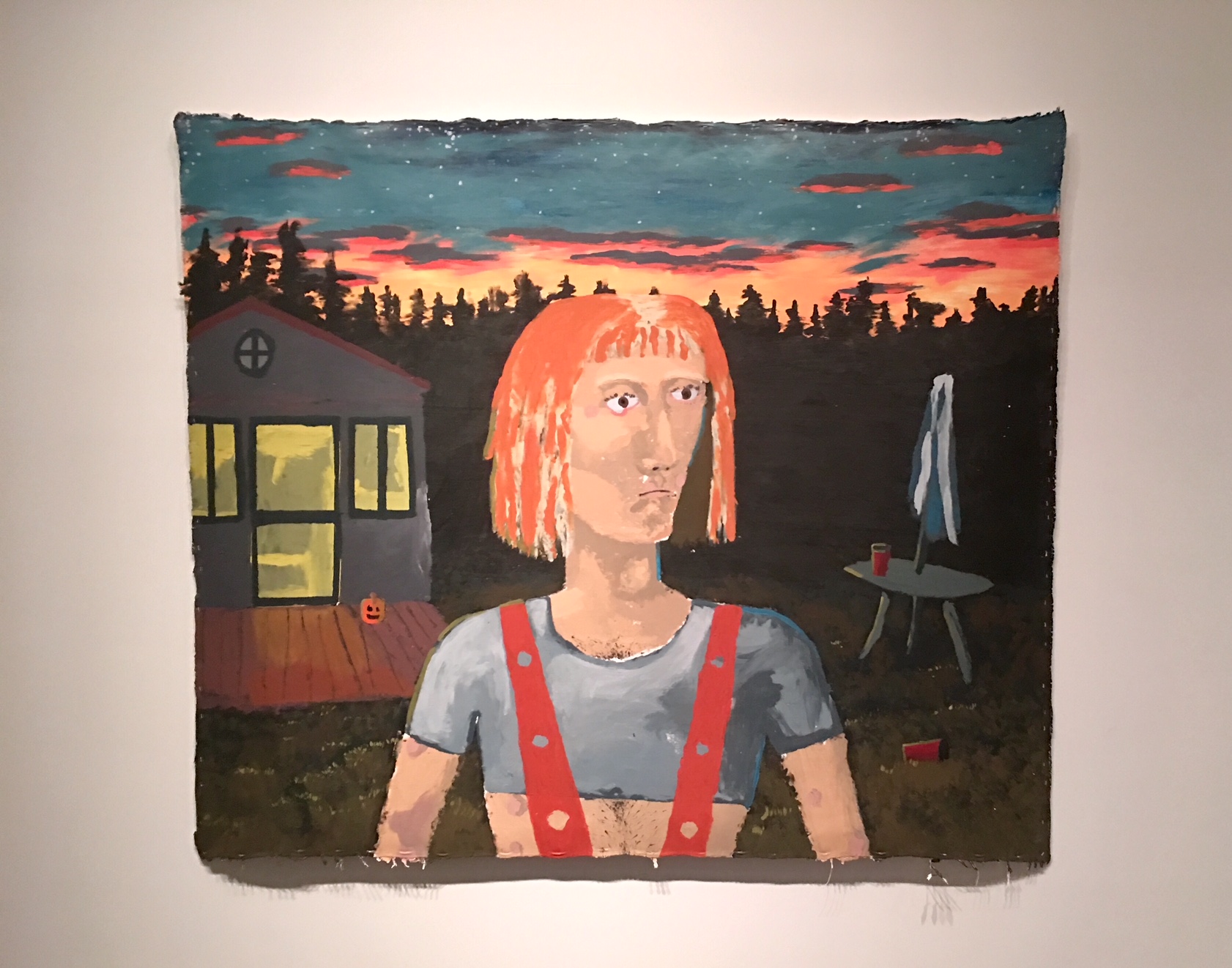
The New Museum’s triennial used to be known as the “generational” because it introduced a new wave of young artists from across the globe. The museum has since dropped the term, but the latest edition, “Songs for Sabotage,” still puts fresh talent at the forefront, with 26 artists ranging in age from 25 to 38 and hailing from 19 countries—many exhibiting in the US for the first time. Here are five standouts.
1. Janiva Ellis
Janiva Ellis, Doubt Guardian 2 (2017).
This 30-year-old painter will no doubt be one of the most talked-about artists of the show. The calm country landscapes in the background of Ellis’s paintings clash with her psychologically tormented subjects, who are often tyrannized by cartoon characters. The occasional appearance of religious symbols—a lamb, an angel—heighten the psychoanalytic tension in Ellis’s work.
2. Manolis D. Lemos
Manolis D. Lemos, dusk and dawn look just the same (riot tourism) (still), (2017). Courtesy of the artist.
Lemos’s video of protesters running through the streets of Athens in matching jackets begins with the figures in formation and then shows them gradually individuating their trajectories before splintering off into different directions. Set to a soundtrack of a Greek pro-democracy anthem, the work is a mesmerizing study in ambiguity—are they victims or perpetrators, nationalists or anti-fascists? Their stride toward the historic Omonia Square hints, the wall text tells us, at the “terrifying continuity of neoliberalism and nationalism.”
3. Daniela Ortiz
Daniela Ortiz, This land will never be fertile for having given birth to colonisers (Esta tierra jamás será fértil por haber parido colonas) (2018).
For her contribution to the triennial, the Peruvian artist has proposed six provocative alternatives to the monuments of Christopher Columbus that stand in New York City. Ortiz’s ceramic models celebrate the indigenous people that Columbus “conquered” as well as those who’ve continued resisting colonial forces to this day. One work pays tribute to Chicana theorist Gloria E. Anzaldúa, another proposes a beheaded Columbus statue defaced with anti-racist graffiti, while yet another depicts an immigrant boy burning his deportation papers.
4. Manuel Solano
Installation view of Manuel Solano’s I’m Flying! (2017) and Aunt Ana Portrayed With Her Pearls (2017).
In 2014, the Mexican artist became legally blind as a result of untreated HIV/AIDS. Solano, who is transgender and uses the pronoun “they,” takes that year as the end point of their pictorial memory, choosing to portray such pop-cultural moments as Fairuza Balk’s descent into madness in the 1996 witch thriller The Craft, as well as personal recollections, including a portrait of “Aunt Ana.”
5. Wong Ping
Wong Ping, still from Wong Ping’s Fables I (2018). Courtesy of the artist and Edouard Malingue Gallery.
The Hong Kong illustrator and animator updates fairy tales from the Brothers Grimm and Hans Christian Andersen with modern-day horror stories, such as, in this first part of a video series, a young Asian woman who hates herself for not having double eyelids. As the video progresses, we follow the stories of a tree that becomes alarmed by a cockroach that emerges from an elephant’s handbag on the bus and uses telepathic powers to plead with the insect to go away, and also of a chicken that becomes addicted to its rising social-media followership to the extent that it destroys everything it holds dear in a catastrophic police raid gone wrong. It’s absolutely worth watching in full, pinching yourself all the way.